
Journal of Hydrodynamics
Scope & Guideline
Empowering Researchers Through High-Impact Hydrodynamics
Introduction
Aims and Scopes
- Fluid Dynamics and Hydrodynamic Modeling:
The journal emphasizes rigorous computational and experimental studies in fluid dynamics, exploring complex flow phenomena, including turbulence, cavitation, and sediment transport. - Multiphase Flow and Interactions:
Research on interactions between different fluid phases, such as gas-liquid and solid-liquid systems, is a core focus, highlighting the dynamics of bubbles, droplets, and particulates in various flow conditions. - Hydrodynamic Performance of Marine Structures:
Investigations pertaining to the performance of marine vehicles, offshore structures, and renewable energy devices, such as wind turbines and wave energy converters, are prevalent. - Environmental and Ecological Impacts:
The journal covers studies related to hydrodynamics in natural water bodies, including the effects of vegetation, sediment dynamics, and pollutant transport on aquatic ecosystems. - Numerical Methods and Simulation Techniques:
A significant contribution of the journal is the development and application of advanced numerical methods, such as computational fluid dynamics (CFD) and particle methods, for simulating complex hydrodynamic problems.
Trending and Emerging
- Cavitating Flows and Bubble Dynamics:
There is a significant increase in studies addressing cavitation phenomena, particularly related to bubble dynamics and their interactions with solid boundaries, emphasizing their implications in engineering applications. - Machine Learning and Data-Driven Approaches:
The integration of machine learning techniques in fluid dynamics research is on the rise, facilitating enhanced predictions and optimizations in hydrodynamic modeling. - Impact of Vegetation on Hydrodynamics:
Research exploring the effects of submerged and emergent vegetation on flow characteristics and sediment transport has gained traction, reflecting a growing interest in eco-hydrodynamics. - Advanced Simulation Techniques:
The use of high-fidelity numerical methods, including large-eddy simulations (LES) and smoothed particle hydrodynamics (SPH), has become more prevalent, showcasing the journal's commitment to cutting-edge computational techniques. - Hydrodynamic Noise and Environmental Impact:
Emerging studies on hydrodynamic noise generated by marine structures and its ecological implications are increasingly common, highlighting the intersection of hydrodynamics and environmental science.
Declining or Waning
- Simplified Analytical Models:
There has been a noticeable reduction in papers focused on basic analytical models for hydrodynamic problems, as researchers increasingly favor complex numerical simulations that provide more accurate predictions. - Traditional Hydraulic Engineering Applications:
The focus on conventional hydraulic engineering applications, such as basic flow mechanics in open channels, appears to be waning, possibly due to the growing interest in multifaceted environmental and ecological studies. - Static Flow Analysis:
Research centered on static or steady-state flow conditions has diminished, with a shift toward dynamic and transient flow analyses that better reflect real-world conditions.
Similar Journals
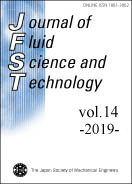
Journal of Fluid Science and Technology
Elevating Understanding of Fluid Transfer ProcessesThe Journal of Fluid Science and Technology, published by the Japan Society of Mechanical Engineers, serves as a pivotal platform for the dissemination of cutting-edge research in the fields of fluid mechanics and mechanical engineering. With an ISSN of 1880-5558, this Open Access journal has been dedicated to advancing the understanding of fluid flow and transfer processes since its establishment. As of 2023, it holds a significant position with a Q3 quartile ranking in both Fluid Flow and Transfer Processes and Mechanical Engineering categories. Researchers and practitioners are encouraged to explore the journal’s extensive collection of articles, contributing to the body of knowledge that impacts various practical applications in engineering and technology. The journal, which has established a reputation for quality amidst a competitive landscape, further fosters international collaboration and education by providing unrestricted access to its content. For professionals and students alike, the Journal of Fluid Science and Technology represents an invaluable resource for the latest findings and innovations in fluid dynamics and mechanical systems.

INTERNATIONAL JOURNAL OF OFFSHORE AND POLAR ENGINEERING
Shaping the Future of Offshore and Polar EngineeringINTERNATIONAL JOURNAL OF OFFSHORE AND POLAR ENGINEERING, published by the International Society of Offshore and Polar Engineers, is a prominent academic journal dedicated to advancing research in key engineering disciplines such as Civil, Mechanical, and Ocean Engineering. Established in 1991, the journal caters to a global audience, providing an essential platform for disseminating innovative findings and case studies pertinent to offshore and polar environments. With a focus on practical and theoretical applications, the journal ranks in the Q3 category across its relevant fields as of 2023, reflecting its significant contribution to civil and structural engineering, mechanical engineering, and ocean engineering. Although it does not offer open access, its rigorous peer-review process ensures that only high-quality research is published, making it a critical resource for researchers, industry professionals, and students invested in the dynamics of offshore and polar engineering. The journal's commitment to exploring emerging challenges and technological advancements underlines its importance in shaping the future of engineering practices in some of the world's most extreme environments.
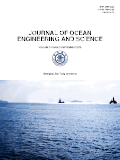
Journal of Ocean Engineering and Science
Elevating ocean engineering to new horizons.The Journal of Ocean Engineering and Science, published by Elsevier, is a prominent academic journal dedicated to advancing the field of ocean engineering and environmental sciences. Since its inception as an Open Access journal in 2016, it has rapidly gained recognition, achieving significant impact factor ratings with notable placements in the prestigious Q1 category for Ocean Engineering and Oceanography, and Q2 for Environmental Engineering in 2023. With a remarkable ranking of #3 out of 105 in Ocean Engineering and #4 out of 145 in Oceanography according to Scopus, the journal plays a critical role in disseminating cutting-edge research and innovative solutions addressing complex challenges faced by marine environments. Operating from Amsterdam, Netherlands, the Journal of Ocean Engineering and Science invites contributions from researchers, professionals, and students worldwide, emphasizing the importance of interdisciplinary approaches in achieving sustainable maritime practices.

Marine Intellectual Technologies
Advancing marine science through innovative research.Marine Intellectual Technologies is an innovative open-access journal dedicated to advancing the field of marine science and technology. Published by the Research Centre Marine Intelligent Technologies, this journal serves as a platform for researchers, professionals, and students to share their latest findings and developments related to marine engineering, oceanography, and aquatic systems. With its commitment to disseminating high-quality research, Marine Intellectual Technologies plays a pivotal role in fostering collaboration and knowledge exchange among the global marine research community. Although the journal's impact factor is currently under review, its focus on embracing cutting-edge technologies and methodologies positions it at the forefront of marine scholarship, allowing for greater insights into sustainable ocean use and marine resource management. Additionally, the accessibility of research published in this journal supports the ongoing educational pursuits of scientists and practitioners alike, ensuring that important marine research is readily available to all.
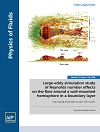
PHYSICS OF FLUIDS
Exploring the Dynamics of Fluids with PrecisionPHYSICS OF FLUIDS is a premier journal published by AIP Publishing that serves as a vital resource for the fluid mechanics community. With an impressive impact factor and a consistent ranking in the Q1 quartile across multiple related disciplines—including Computational Mechanics, Condensed Matter Physics, Fluid Flow and Transfer Processes, Mechanical Engineering, and Mechanics of Materials—this journal is renowned for disseminating high-quality research in the dynamic field of fluid dynamics. Covering a wide range of topics, from fundamental fluid mechanics to advanced computational modeling, PHYSICS OF FLUIDS plays a crucial role in advancing understanding and fostering innovation in both academic and industrial applications. With its strong reputation and significant readership, this journal is essential for researchers, professionals, and students seeking to stay updated on the latest developments in fluid physics.
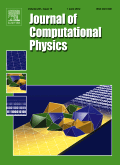
JOURNAL OF COMPUTATIONAL PHYSICS
Transforming Ideas into Computational RealitiesJOURNAL OF COMPUTATIONAL PHYSICS, an esteemed publication from ACADEMIC PRESS INC ELSEVIER SCIENCE, serves as a premier platform in the field of computational physics and its interdisciplinary applications. Since its inception in 1966, the journal has provided invaluable insights and significant advancements in areas such as applied mathematics, numerical analysis, and modeling and simulation. With a robust impact factor and ranking in the top quartile across various related categories, including Q1 in Applied Mathematics and Physics and Astronomy, it is essential reading for researchers and professionals aiming to stay at the forefront of computational techniques and methodologies. Although the journal is not open access, it remains highly regarded with a reputation for rigorous peer review and high-quality publications. As the field continues to evolve, the JOURNAL OF COMPUTATIONAL PHYSICS highlights innovative research that not only advances theoretical constructs but also offers practical applications in scientific and engineering domains. For scholars and students, this journal embodies a critical resource for deepening their understanding and fostering dialogue within the scientific community.

TRANSPORT IN POROUS MEDIA
Charting New Frontiers in Transport ScienceTRANSPORT IN POROUS MEDIA is a prominent peer-reviewed journal published by Springer, dedicated to advancing the understanding of fluid and energy transport processes in porous structures. With an ISSN of 0169-3913 and an E-ISSN of 1573-1634, this journal has established itself as a leading platform in the realms of chemical engineering and catalysis, achieving a ranking of Q2 in Chemical Engineering and Q3 in Catalysis as of 2023. The journal encompasses a wide scope, covering theoretical, experimental, and applied research that explores the complexities of porous media transport phenomena, thus catering to a diverse audience of researchers, professionals, and students in related fields. Although open access options are not offered, TRANSPORT IN POROUS MEDIA remains an excellent resource for those seeking to stay at the forefront of advancements and challenges in porous media transport. With a publication history dating back to 1986 and ongoing contributions expected until 2024, this journal continues to play a crucial role in fostering knowledge and innovation within the discipline.
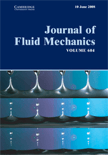
JOURNAL OF FLUID MECHANICS
Innovative insights for the fluid dynamics community.JOURNAL OF FLUID MECHANICS, published by Cambridge University Press, is a premier international journal recognized for its significant contributions to the field of fluid dynamics. With an esteemed impact factor that places it in the Q1 category across multiple disciplines, including Applied Mathematics, Condensed Matter Physics, Mechanical Engineering, and Mechanics of Materials, this journal serves as a vital resource for researchers and practitioners alike. Established in 1956, it provides a platform for innovative and high-quality research articles that advance the understanding of fluid mechanics phenomena. The journal's rankings underscore its prestige, with Scopus recognizing it among the top journals in its category. Although it currently does not offer open access, the journal remains accessible to educational institutions and professionals in the United Kingdom and beyond. By addressing critical and emerging topics in fluid mechanics, JOURNAL OF FLUID MECHANICS is essential for those striving to push the boundaries of knowledge and application in this dynamic field.

Journal of Applied Mechanics and Technical Physics
Innovating Insights in Applied Mechanics and Technical PhysicsJournal of Applied Mechanics and Technical Physics is a distinguished publication that serves as a vital resource for researchers and professionals in the realms of mechanical engineering, mechanics of materials, and condensed matter physics. Published by MAIK NAUKA/INTERPERIODICA/SPRINGER, this journal has been committed to disseminating high-quality research since its inception in 1965. With a noted presence in the academic community, it holds a respectable Q3 ranking in multiple categories as of 2023, indicating its relevance and contribution to the field. Although it does not currently offer open access, the journal provides valuable insights and advancements through its rigorous peer-review process. Covering a broad spectrum of topics in applied mechanics and technical physics, it aims to foster innovation and dialogue among scientists, engineers, and scholars alike. Located in the United States, the journal continues to make significant strides in bridging the gap between theoretical research and practical applications, making it an essential read for anyone engaged in these dynamic fields.
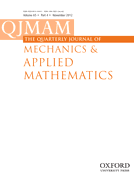
QUARTERLY JOURNAL OF MECHANICS AND APPLIED MATHEMATICS
Fostering Innovation in Mechanical Engineering Research.Quarterly Journal of Mechanics and Applied Mathematics, published by Oxford University Press, stands as a pivotal platform in the realms of applied mathematics, mechanical engineering, and condensed matter physics. Established in 1948, this venerable journal has continuously contributed to advancements in the understanding of complex mechanical phenomena through rigorous research and scholarly articles. With its Q3 status across multiple categories—applied mathematics, condensed matter physics, mechanical engineering, and mechanics of materials—it serves as a significant resource for both emerging and established researchers. While the journal is not open access, it is highly regarded for its selective publication process, ensuring that only high-quality, original research is disseminated. The impact factor reflects its critical role within the academic community, making it an essential read for scholars, professionals, and students aiming to stay at the forefront of developments in mechanics and applied mathematics.